Trees Birds Mammals Fish Amphibians Reptiles
Wild Algarve
Bookshop
Psathyrella ammophila (Durieu & Lév.) P. D. Orton - Dune Brittlestem
Phylum: Basidiomycota - Class: Agaricomycetes - Order: Agaricales - Family: Psathyrellaceae
Distribution - Taxonomic History - Etymology - Identification - Culinary Notes - Reference Sources
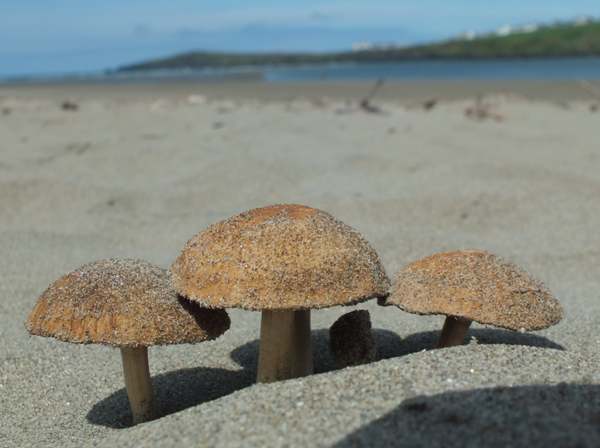
Dune Brittlestems are saprotrophic on dead Marram Grass (Ammophila arenaria), and these little mushrooms can sometimes be found remarkably close to the littoral line, although stable dune slopes and dune slacks are the best places to look for them.
Distribution
Fairly common and widespread in coastal dunes around Britain and Ireland, Psathyrella ammophila occurs in other coastal regions of northern Europe,
Variable in colour but often swarthy, Dune Brittlestems usually fruit either singly or in small groups. The appearance of these salt-tolerant fungi is very variable, dependent on age and exposure to sunlight.
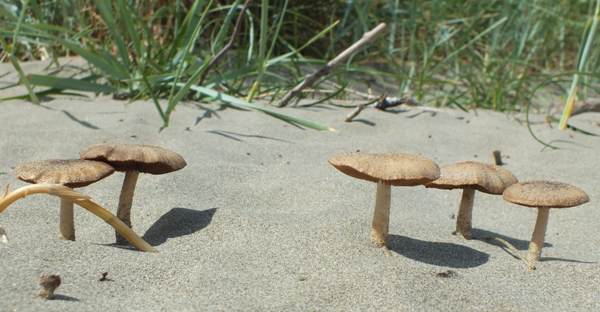
Taxonomic history
The Dune Brittlestem was described scientifically in 1868 by French botanists Michel Charles Durieu de Maisonneuve (1796 - 1878) and Joseph-Henri Léveillé (1796 - 1870). It was British mycologist Peter Darbishire Orton (1916 - 2005) who, in 1960, redescribed this species as Psathyrella ammophila, by which scientific name it is generally known today.
Synonyms of Psathyrella ammophila include Agaricus ammophilus Durieu & Lév., Psilocybe ammophila (Durieu & Lév.) Gillet, and Drosophila ammophila (Durieu & Lév.) Kühner & Romagn.
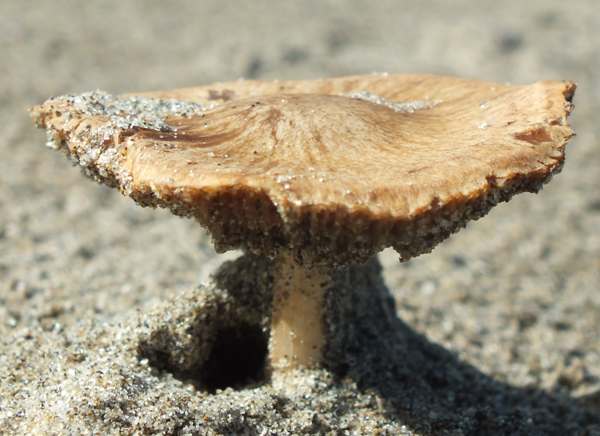
Etymology
Psathyrella, the genus name, is the diminutive form of Psathyra, which comes from the Greek word psathuros meaning friable; it is a reference to the crumbly nature of the caps, gills and stems of mushrooms in this genus. The specific epithet ammophila comes from the Greek ammos, meaning sand, and phillia, meaning lover. Judging by its habitat this is indeed a sand-loving mushroom.
Identification guide
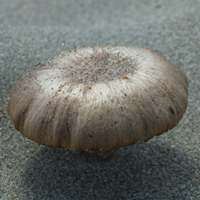
|
Cap
3 to 5cm across; initially bell-shaped, flattening; margin not striate; surface pale brown, tan or mid brown, paler in dry weather but usually blackening when very old; smooth, but often coated in sand particles. |
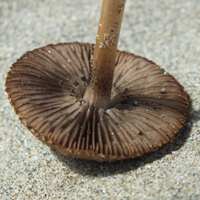 |
Gills
Adnate, fairly crowded; dingy brown becoming chocolate brown; drying very dark brown, almost black. |
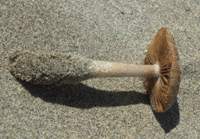 |
Stem
3 to 7cm long above the surface, but usually a further 2 to 4cm buried in sand; 2 to 5mm diameter; rooted among Marram Grass; whitish, turning brown with age; as with other members of this genus there is no stem ring. |
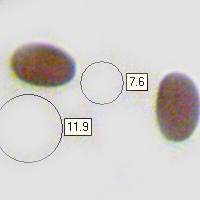 |
Spores
Ellipsoidal, smooth, 10-11 x 6-7µm with a large germ pore.
Spore print
Very dark brown (almost black but with a slight red tinge). |
Odour/taste |
Not distinctive. |
Habitat & Ecological role |
Saprobic, on decaying Marram Grass roots and buried stems. |
Season |
June to November in Britain and Ireland. |
Culinary Notes
Even if you are prepared to grit your teeth, you will not enjoy eating Dune Brittlegills - many field guides simply list it as inedible, although I have not come across reports of Psathyrella ammophila causing serious illness when eaten.
Reference Sources
Fascinated by Fungi, 2nd Edition, Pat O'Reilly 2016, reprinted by Coch-y-bonddu Books in 2022.
Dictionary of the Fungi; Paul M. Kirk, Paul F. Cannon, David W. Minter and J. A. Stalpers; CABI, 2008
Taxonomic history and synonym information on these pages is drawn from many sources but in particular from the British Mycological Society's GB Checklist of Fungi.
Top of page...
Fascinated by Fungi. Back by popular demand, Pat O'Reilly's best-selling 450-page hardback book is available now. The latest second edition was republished with a sparkling new cover design in September 2022 by Coch-y-Bonddu Books. Full details and copies are available from the publisher's online bookshop...